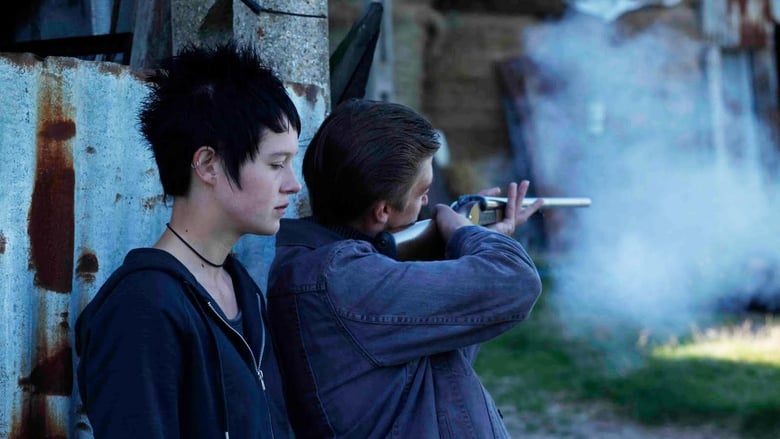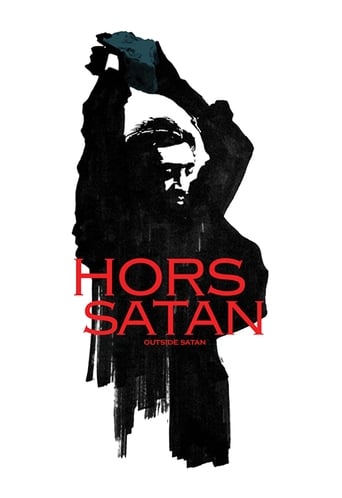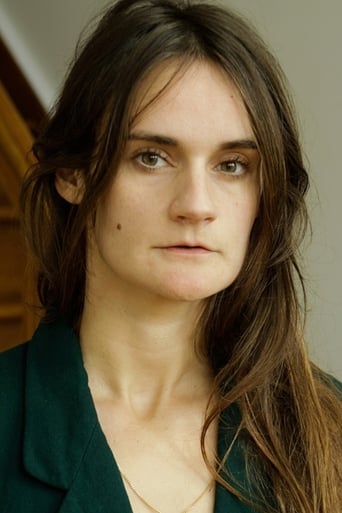Along the Côte d'Opale, near a hamlet, with its dunes and marshes, lives a mysterious wanderer from nowhere who struggles along, poaches, prays and builds fires...
Reviews
Truly Dreadful Film
A Disappointing Continuation
The film makes a home in your brain and the only cure is to see it again.
Each character in this movie — down to the smallest one — is an individual rather than a type, prone to spontaneous changes of mood and sometimes amusing outbursts of pettiness or ill humor.
This strange film is set on the northern French coast around Calais.A vagabond(David Dewaele)lives in the wilds of nature,with a small fire to keep him warm.His companion,a teenage dark-haired virginal goth(Alexandra Lematre), walks with him everywhere. They are both lost in a mirage of naturalism,supposedly beyond both good and evil,'hors Satan'. There is no back-story.The man gives to people what they want:to the young girl he is a protector,refusing to have sex with her and killing the guard who harasses her,he's also killed her step-father for abusing her at the start of the film.Police make enquiries about the murders. The goth lives with her mother.To a hitch-hiker he brings sexual bliss,so she is frothing at the mouth. For the mother whose daughter is possessed he drives out the demons by raping the possessed young girl.He moves around his territory like a hunter-gatherer, but the territory is spiritual and he seems to commune with nature,kneeling,taking in the land and sky.He can knock at any door and get a bite to eat,as the people who live around here trust him.His young companion gets raped and dies and he mysteriously takes her body out into the landscape and lays it in a certain way and leaves it.The strange ritual is a form of resurrection.He is a holy fool or shaman,a phalli-centric worshipper of nature.What do we make of Dumont's purpose here? He has taken the character who was marginal in his last film,Hadewijch, but was pivotal as the natural man in saving the central character from committing suicide, and he's made him the central character in this film,which has no music; you hear only the sounds of nature,breathing,walking,the wind, leaves, water and birds.The characters have no names.This is a new world of primitive,mythological fantasy.The objective lens pans the countryside, dunes,trees,marshes, hills,streams,capturing sunrise,magic-hour,the long shots are slow,panoramic, the dialogue minimal,impregnating us with the image like a Poussin or Constable painting.The character can be seen as both evil and good,being one and the same thing.The characters are half-way between symbol and reality.Dumont is the atheist moving towards Bressonian subject matter(The Devil, Probably),bringing in religious themes. In this society we seem free of the ills of capitalism and modern technology,in marginal space,a magical zone,outside the normal rules that would apply in urban life in cities and towns.There is a serial killer rapist in the vicinity,who has a dog.When the police capture him,the natural wanderer takes his dog and walks on to his next location.This ends a trilogy of films made on spiritual themes. Absolutely astonishing.
I am not going to write a summary about this film or explain what it is about.This is a film where you have to let go the concept of 'story'. Don't search for a narrative structure. This film is all about 'feeling' and 'experiencing'. In my opinion something that is harder and harder to find in modern cinema, that is mainly there to 'entertain' audiences.This is a film that redefines the concept of 'interpretation'I would like to give a short explanation why...The moment I started the movie and watched the first images I was immediately absorbed by the sheer beauty of the landscape and how this landscape is framed (done by the fine French cinematographer Ives Cape). I learned in these first few minutes that the framing is key in this picture. In 'Hors Satan' it is not merely the framing (observing) of a composited shot. It is much more...What happens in 'Hors Satan' is the constant shift between the objective view and the subjective view of an image. We (as an audience) see two figures, traveling trough a desolate landscape. Through forests, plains of sand, a small quiet village (the center point in this landscape). They don't talk much. They just walk along. Their facial expressions tells enough.This is the objective side of 'Hors Satan'. The camera and the spectators 'observe' But in 'Horse Satan' one will also find a high amount of subjectivity. In this film the two protagonists are constantly 'watching', and we see them doing just that! We see what they see. A meadow, branches of a tree poking into the air. This brings us closer to the projected image. It seems as if Bruno Dumont literally places the camera on the exact spot of the eyes of the watching actors. By doing just that, we observe the characters watching and then we too are able to observe what they see. In fact that doesn't seem to be a lot for the observing audience, but at the same time there is a lot of information within these frames. Part of the message of the film, of the subtext, is hidden. This 'watching' of the landscape trough the eyes of the protagonists makes the film much more of a subjective experience.It seems that this alternative form of film making, of a different film language is very rare these days. There are few authors who do it. And if you liked 'Hors Satan', you should definitely have a look at the rest of Dumont's oeuvre (the films: La vie de Jesus, L'Humanité, Twentynine Palms, Flanders, Hadewijch) and also check out film makers like Bela Tarr, Leos Carax, Terrence Malick, Aleksandr Sokurov and Matthew Barney.You, as a spectator (I include myself as well) has to create a different way of 'reading' films like this. Let the story structure go, except questions that will not be answered, and again, don't search for a narrative safety line. Just let it roll over you.
We could extract many elements out of this movie, and focusing only on one philosophical aspect/thought sequence right now, sequence with certain 'ethico-religious' consequences, the following comes to our view: one thing which is recurring and like a repeating cycle overwriting itself, a "constant" through the film, is the perpetual and persistent "gaze" of the main protagonist.The gaze somehow in its element of "gaze as such"/the pure gaze, transcends the limits of "particularity" and connects itself correspondingly with the vast and vacant environment, the mountains or trees or the sun on the horizon etc. Those visual fields are the approximation to this pure gaze, which just gazes, absorbs the various elements in itself, enveloping the whole environment and making it extinct in the "act of the gaze", somehow dislocating itself from/through the "particular" to connect itself with the "universal", like the empty canvas which contains all the colors and contours of the picture; the gaze remains like this empty canvas, which is somehow beyond "good and evil", in a sense, it is the indifferent element, which takes both good and evil as the same and interchangeable - the pure gaze appears as if untouched by different particularities or the content which it will process along the way. Could this "hors-satan-gaze" be the pure gaze of the (pure) consciousness, the spiritual tradition is talking about? In various religious traditions there are divine madmen, who appear crazy, to whom the moral standards don't apply anymore, to whom the codes of normality, the rigid distinction between good and evil is just useless and a sign of fear and conformity. Is the main protagonist of the movie this kind of divine madman? Could be. Is his perseverance to do what he has to do (without obvious and self-evident reasons behind his actions), at the specific junction of the action/happenings that take place, a certain "death drive", drive that goes beyond life, beyond the safe and life-preserving functions; does that make him diabolical for that reason? Could we link his character, for example, to the characters like Bobby Peru (played by Willem Dafoe) from David Lynch's "Wild at heart" or maybe crazy Anton (played by Javier Bardem), the Coen Brothers movie "No Country for Old Men"? In some sense all those characters appear stronger than the Life itself, driven by a sort of pure Death drive, not minding the consequences, like strange impersonations of the apocalyptic figures that destroy what needs to be destroyed along the way (by some unfathomable self-will), but at the same time confront us with radical truths which remain hidden to us, or better, the truths "we don't want to know anything about them". Are they divine figures that confront us with our own devils? It is to be answered individually. What is more diabolical, the action itself, good or bad, or the "gaze as such" which is witnessing both? In a sense, this gaze remains intact and 'pure' by the good or bad input; it accepts them both. Isn't this the perversity of the gaze itself, to be indifferent, to take upon itself whatever it comes, without any distinction? If we say that one person is good or bad, we say this according to the standards of what is good and bad action; action needs to be done so that we can retroactively evaluate if the person is 'good' or 'bad'; only when the action is done we can say, that this person has decided (though it can/could be theoretically 'predetermined' by the causal chain events) to act according to his 'eternal' nature, which shows its "eternal character", only through particular actions that someone takes upon through the course of life.In the instances of "Hors Satan" characters, it appears as if they evade this logic and are the subjects which freely rearrange the parameters of life, as if by a bizarre strike of "deus ex machina" intervention, and thus change completely the scenery and current events by dropping down the unbearable truth of confronting us with our worst nightmares and casual fears. They are certainly not the universal remedy, but they bring a certain perspective which pushes the ordinary reality to its borders, forcing us to rethink the thin lines between good and evil.
Avant-garde movie exploring issues of good and evil, their interdependency, and transformation of one into the other. The pace is extremely slow and script mostly uneventful, so that viewer could focus on the truly meaningful scenes. Landscapes of Northern France along with visual and sound techniques are intended to capture viewer's attention during long scenes of walking amidst green scenery that take large part of the running time. Yet movie's overall slowness, which could be an allegory for mundane daily life of an average person, provides good counter-balance to several naturalistic scenes that are intense, and even shocking. The dialogue is scarce, which also serves to illuminate important plot twists. It is obvious why general public might not like the movie, however I enjoyed it at TIFF11 and my biggest regret is not being able to stay for the Q&A session with director Bruno Dumont after the screening.
Top Streaming Movies














